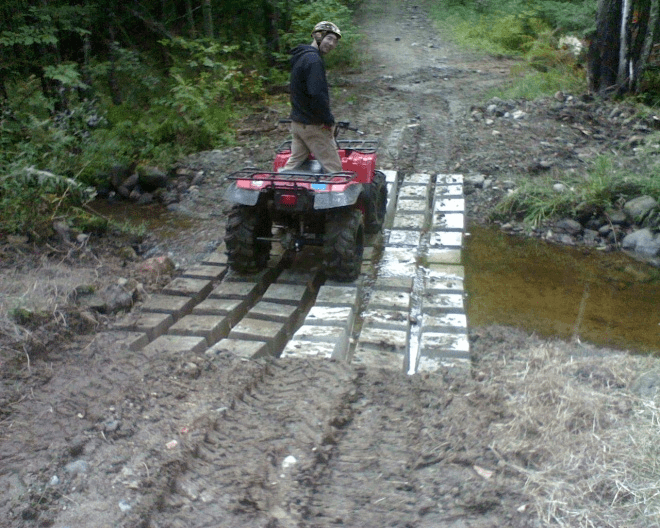 | ||
Similar Shimanto River, Nakamura Station, Hage Station, Ekawasaki Station, Kubokawa Station | ||
Low water crossings for livestock and equipment planning for aquatic organism passage
A low-water crossing (also known as an Irish bridge, causeway in Australia, low-level crossing or low-water bridge) provides a bridge when water flow is low. Under high-flow conditions, water runs over the roadway and precludes vehicular traffic. This approach is cheaper than building a bridge to raise the level of the road above the highest flood stage of a river, particularly in developing countries or in semi-arid areas with rare high-volume rain. Low-water crossings can be dangerous when flooded.
Contents
- Low water crossings for livestock and equipment planning for aquatic organism passage
- Construction
- Navigation
- Safety
- References
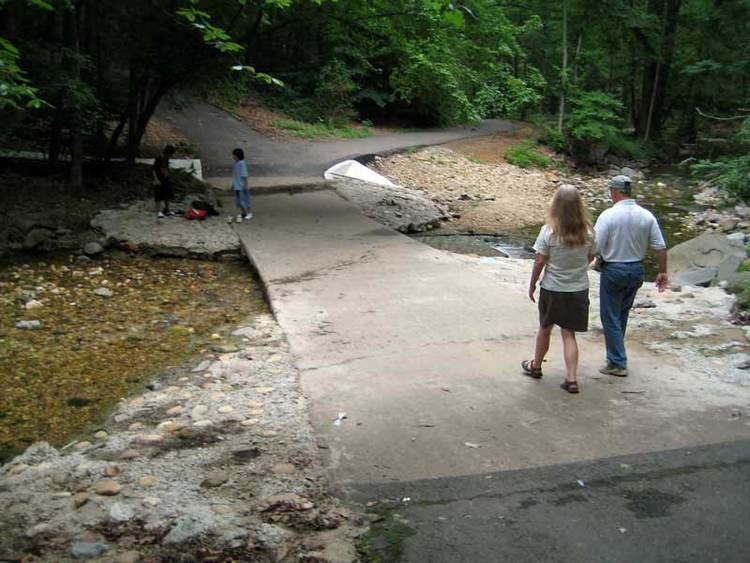
Construction
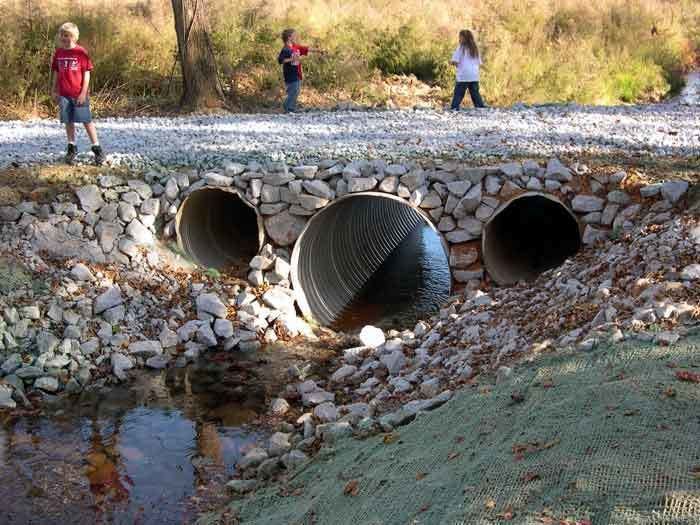
The low-water crossing was developed from the traditional ford. A ford permits vehicular traffic to cross a waterway with wet wheels. The term “low-water crossing” implies that the crossing is usually dry, while “ford” implies that the crossing is usually wet.

A simple low-water crossing can be constructed with culverts. Culverts (often concrete pipes) are used to carry the water in a stream keeping the crossing surface dry for most of the year. High flows, e.g. spring runoff or flash floods, flow over the top of the crossing, as the culverts are not large enough to carry these flood-type runoff events.

A more elaborate low-water bridge will usually be an engineered concrete structure. There are thousands of such structures in the western United States; some of them accommodate four-lane city streets or highways. Typically, a low-water bridge that accommodates a high daily volume of vehicular traffic will be underwater only a few days per decade.
Navigation
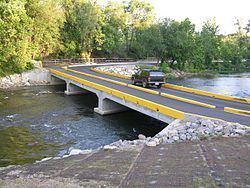
A low-water bridge renders the waterway non-navigable. In almost all cases this is not a practical concern, since the waterway would be non-navigable except during flood conditions anyway.
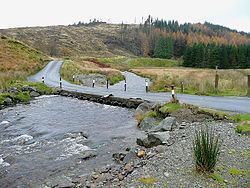
A low-water bridge is sometimes called a submersible bridge, but this is a misnomer. A true submersible bridge is used on navigable waterways and is actively lowered into the water.
Safety
The concept behind low-water crossings is that they are convenient and safe to use in normal conditions. Once the water level rises to the point where it crosses the bridge surface the bridge is generally unsafe to use, and in developed countries this will usually be indicated by warning signs. An additional hazard is that the bridge surface may become completely obscured by the water, making it relatively easy to fall off the bridge surface into the deeper and more hazardous water on either side. As a consequence the line of the submerged bridge is often marked with poles or other structures to indicate its course to unwary travelers and emergency users even when submerged.
The force of the moving water may be strong enough to physically push the vehicle off the bridge (partially or totally: the higher the percentage of the vehicle in the water, the more likely the water's force will take the vehicle off the bridge and send it down river with substantial damage). One additional risk for trying cross a bridge under water may include the vehicle's engine cutting out (stalling). Most times, when a vehicle has stalled, people will try to get out of the vehicle. When they leave the vehicle, they step into water currents that can cause them to fall or be pulled down into the water. They are exposed to a strong hydro force, which may sweep them down river and the water may jam their body into debris in the waterway's path which may cause injury and/or death.
Despite the obvious dangers and warnings given there are still a significant number of emergencies and even deaths attributable to the unwary use of low-water bridges during flood conditions.
One attempted solution/deterrent is the Stupid Motorist Law in Arizona, United States.
